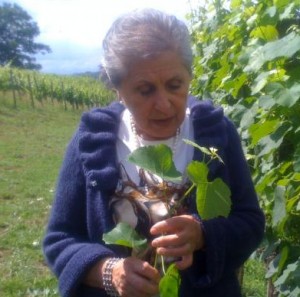Some of us have talked about where to point guests asking for California, Chilean, and Australian reds. I’ve suggested that one solution is to point them in the direction of Argentine malbec, which, though not identical does offer what I suspect they’re really after: big, juicy, New World fruit wrapped in velvety tannins.
This started me thinking about what people are really asking for when they specify a kind of wine. I wrote about this once as the ‘more like this’ problem.
The ‘more like this’ problem arises when you have a wine you like and want to duplicate the experience with something similar. The question in such a case is to figure out what ‘like this’ means. It could mean that you’ve discovered you really like Marlborough sauvignon blanc – or it might mean that what really excites you is aromatic New World whites – the more flamboyant the better.
Isolating the likable element is important if you’re not going to get stuck with just one kind of wine. In a post on the Globe’s Dishing blog a few years ago I suggested that sometimes the way to get ‘more like this’ isn’t by asking for a category of wine (Sonoma Coast pinot noir; Friulian pinot grigio), but by looking for less obvious commonalities among the wines that please you.
In the case I discuss there (Pedrotti’s schiava nera), I say that one way to get ‘more like this’ would be to explore the portfolio of the specialty importer, Adonna. You may discover that it isn’t the place of the producer that you find most appealing, but the importer’s general approach, taste, and aesthetic. You can read the piece here: http://goo.gl/GqtOK
Noodling this set me off on a new track, wondering about wines that though from separate parts of the world seem to exhibit a set of common traits. I mentioned the affinity between some Australian shiraz and Argentine malbec. But I might have added another link on the chain by asking whether Montepulciano d’Abruzzo isn’t the malbec of Italy — the similitude based on the broad black fruits, sweet feel, and cushy tannins they can both present.
In the quest for wines separated at birth we might go further and consider the affinities between
- high latitude red Burgundy (from the Hautes Cotes de Nuits, say) and nebbiolo from the Valtellina
- Bordeaux and Rioja
- Muscadet and fino sherry
- Malbec and Montepulciano d’Abruzzo or Austrian zweigelt
- hyperlocal white varietals from central Italy (fiano; falanghina) and those from Greece (dafni; assyrtiko)
I’m sure you could add to the list, if you gave it some thought. Let me know if you have some ideas.
* * * *
Oz Wine’s most recent newsletter highlighted sherry. “The Sherry Revolution” is interesting to read and provides a sound primer on the subject. There’s also a link to the website of DeMaison Selections that takes it a bit further. Certainly worth your time.
* * * *
“I planted vines when my husband died. Ever since then, all this love inside me, I give it to the vines.” The quote is from Mme. Yvonne Hegoburu from the film Mondovino (trailer here.) I used an abbreviated form of it as the kicker in a review of the film I wrote for the Globe in 2005. I was reminded of her – one of the film’s most appealing characters – while browsing the Louis/Dressner website this morning and reading harvest reports from various growers. Again it was Mme Hegoburu who stood out. Utterly devoid of literary pretensions, it nonetheless reads as if written by a novelist. It’s so lovely, I just had to pass it on.
Jurançon, October 11th 2010
We are slowly getting close to our harvest.
Past Michaelmas (St. Michael’s Day, Sept. 29th), hunters get in position in their palombières (NT: dove hunting stations), awaiting the first palombes (NT: migrating doves.) Foliage is changing colors on the vines. The final grooming is done, tops are neatly cropped, leaves have been removed around the grapes, the bunches are seeing the sun, everything is ready for autumn weather. Our generous sun will perfect the color of each berry, and bring its sugar content and aromas to a maximum.

Later, everything will rush on. First we’ll see fireworks of colors, as if impressionist painters had come here on vacation. Then, coming from Spain, the Autan wind, warm and dry, soft as a caress, will start its passerillage labor (NT: drying out of bunches on the vines.) Meanwhile, the skies will see flocks of thrushes, often distracted by sweet grapes, and doves in a hurry to go over the Pyrenees before cold weather settles. Then, despite the traffic jams up there, chattering cranes in impeccable V formations will announce that, where they live, it is already cold.
It’ll be the end of October, time to pick the Jurançon moëlleux. Our Tardives cuvée (NT: VT, or late harvest) will finish in December.
Early in November, through a crystal sky at daybreak, we’ll contemplate the majesty of our mountains, the Pic du Midi d’Ossau and the Pic d’Anie, topped by a discreet white cape.
There’ll be a celebration for the birth of our 2010 vintage.